23+ Seedless Nonvascular Plants
Nonvascular plants are characterized by a lack of extensive vascular tissue and have no true roots leaves or stems. Figure below shows the life cycle of moss.
Seedless Plants Botany Blog
Web Explain the role of seedless vascular plants in the ecosystem.
. Web Without a vascular system and roots they absorb water and nutrients on all their exposed surfaces. They dominated the landscape of the Carboniferous growing into tall trees and forming large swamp forests. Seedless plants like these horsetails Equisetum sp thrive in damp shaded environments under a tree canopy where dryness is rare.
Nonvascular seedless plants also known as bryophytes are classified into three phyla. Web The seedless plants nonvascular and vascular play an essential role in the balance of the ecosystems. Web The club mosses or phylum Lycophyta are the earliest group of seedless vascular plants.
In seedless vascular plants such as ferns and horsetails the plants reproduce using haploid unicellular spores instead of seeds. Web These are the nonvascular plants or bryophytes mosses liverworts and hornworts the seedless vascular plants clubmosses and ferns including horsetails club mosses and whisk ferns gymnosperms conifers cycads Ginkgo and gnetophytes and angiosperms or flowering plants. Collectively known as bryophytes the three main groups include the liverworts the hornworts and the mosses.
Web Bryophyte traditional name for any nonvascular seedless plantnamely any of the mosses division Bryophyta hornworts division Anthocerotophyta and liverworts division Marchantiophyta. As they lack vascular tissue they also do not have true roots stems or leaves. Todays club mosses are diminutive evergreen plants consisting of a stem which may be branched and microphylls Figure 3.
Web Nonvascular Plants APP-WIN. Most bryophytes lack complex tissue organization yet they show considerable diversity in form and ecology. Modern-day seedless tracheophytes include club mosses horsetails ferns and whisk ferns.
More than 260000 species of tracheophytes represent more than 90 percent of Earths vegetation. Web Nonvascular Seedless Plants. These plants lack the vascular tissue system needed for transporting water and nutrients.
While our understanding of genetic regulation of plant PCD and the sequence of molecular events involved is still relatively fragmented the. They are the only plants with a life cycle in which the gametophyte generation is dominant. More than 260000 species of tracheophytes represent more than 90 percent of Earths vegetation.
Unlike angiosperms non-vascular plants do not produce flowers fruit or seeds. Most bryophytes lack complex tissue organization yet they show considerable diversity in form and. Web Nonvascular plants do often have a leafy appearance though and they can have stem-like and root-like structures.
Vascular tissue is specialized tissue that transports water nutrients and food in plants. Seedless vascular plants include clubmosses and ferns. Nonvascular seedless plants as their name implies lack vascular tissue.
Bryophytes an informal grouping of the nonvascular plants are the closest extant relative of early terrestrial plants. In seedless vascular plants the diploid sporophyte is the dominant phase of the lifecycle. Vascular tissue is specialized tissue that transports water nutrients and food in plants.
Web Programmed cell death PCD is a fundamental process in plants involved in plant development and mediating abiotic and biotic environmental interactions Kacprzyk et al 2011 Locato De Gara 2018. Most bryophytes lack complex tissue organization yet they show considerable diversity in form and ecology. Nonvascular seedless plants as their name implies lack vascular tissue.
They contribute to the enrichment of the soil and provide shelter and nutrients for animals in hostile environments. These plants are very short because they cannot move nutrients and water up a stem. Web In seedless vascular plants the sporophyte became the dominant phase of the lifecycle.
Bryophyte traditional name for any nonvascular seedless plantnamely any of the mosses division Bryophyta hornworts division Anthocerotophyta and liverworts division Marchantiophyta. Without a vascular system and roots they absorb water and nutrients through all of their exposed surfaces. Water is still required for fertilization of seedless vascular plants and most favor a moist environment.
There are three main. As they lack vascular tissue they. Another trait of this group is the use of spores rather than seeds to reproduce and a life cycle.
The vascular plants or tracheophytes are the dominant and most conspicuous group of land plants. Web Seedless nonvascular plants are small. Web Nonvascular plants that live today include liverworts mosses and hornwortscollectively and informally known as bryophytes.
Bryophyte traditional name for any nonvascular seedless plantnamely any of the mosses division Bryophyta hornworts division Anthocerotophyta and liverworts division Marchantiophyta. The gametophyte is now an inconspicuous but still independent organism. Web Regina Bailey Updated on July 16 2018 Non-vascular plants or bryophytes include the most primitive forms of land vegetation.
Web Seedless vascular plants are plants that contain vascular tissue but do not produce flowers or seeds. Nonvascular plants include mosses liverworts and hornworts. Web Life Cycle of Nonvascular Plants.
Modification of work by Jerry Kirkhart An incredible variety of seedless plants populates the terrestrial landscape. The familiar green photosynthetic moss plants are gametophytes. Web Photosynthetic organs become leaves and pipe-like cells or vascular tissues transport water minerals and fixed carbon throughout the organism.
They are pioneering species that colonize bare or devastated environments and make it possible for succession to occur. The dominant stage of the life cycle is the gametophyte. Seedless plants like these horsetails Equisetum sp thrive in damp shaded environments under the tree canopy where dryness is a rare occurrence.
Web Nonvascular Seedless Plants. Liverworts are the most primitive plants and are closely related to the first land plants. Figure below shows a typical fern life cycle.
Web Learning Outcomes Differentiate between vascular and non-vascular plants Identify the main characteristics of seedless vascular plants The vascular plants or tracheophytes are the dominant and most conspicuous group of land plants. Web OpenStax Skills to Develop Discuss the challenges to plant life on land Describe the adaptations that allowed plants to colonize the land Describe the timeline of plant evolution and the impact of land plants on other living things The kingdom Plantae constitutes large and varied groups of organisms. Web Unlike nonvascular plants all vascular plantsincluding seedless vascular plantshave a dominant sporophyte generation.
They also lack true leaves roots and stems.

Plant Life Seedless Vascular Plants
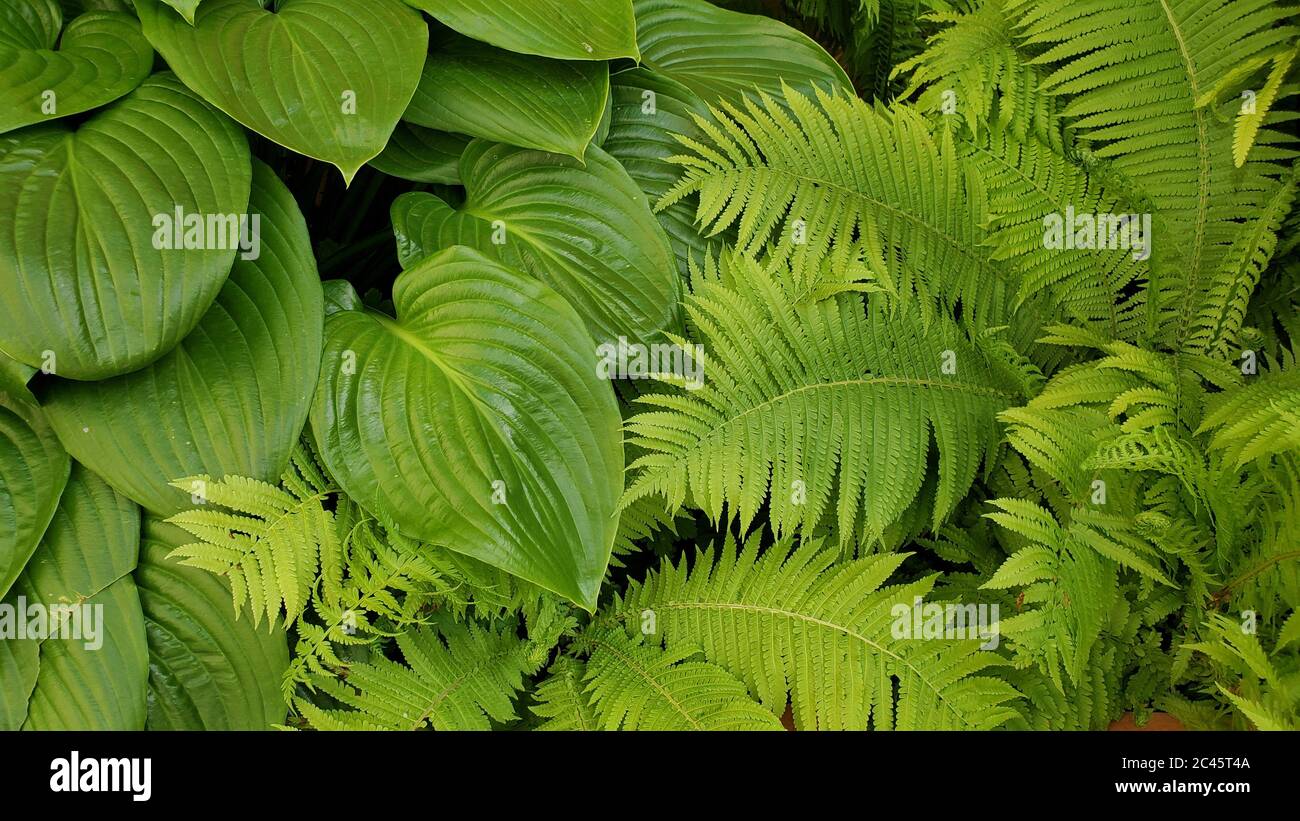
Seedless Plants Hi Res Stock Photography And Images Alamy
25 4 Seedless Vascular Plants Biology 2e Openstax
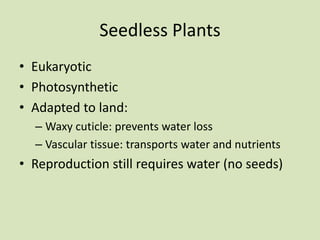
Seedless Plants Bio Ii Slides

Nonvascular And Seedless Vascular Plants Ppt Video Online Download
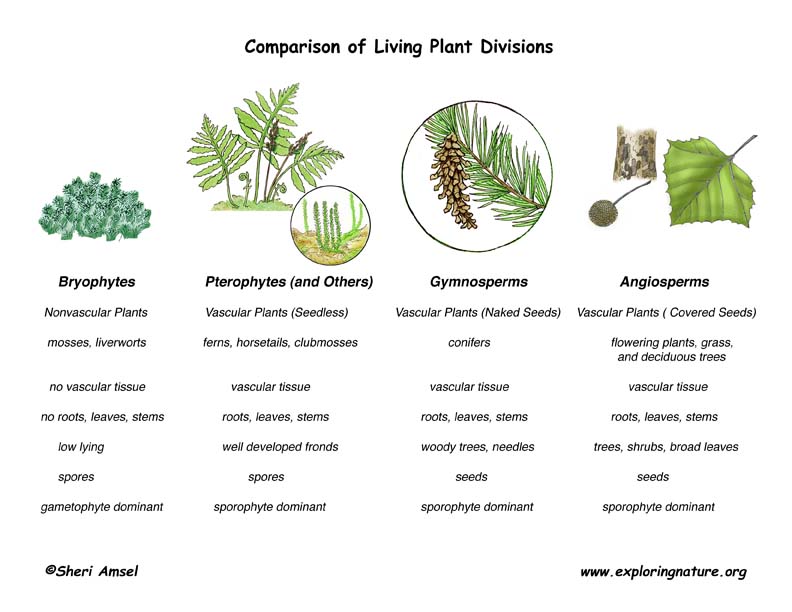
Plant Kingdom Overview
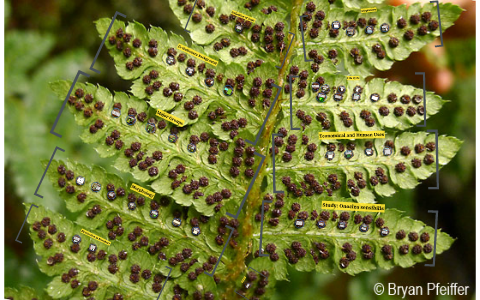
Seedless Vascular Plants And Allies By Peter Chong
:max_bytes(150000):strip_icc()/hornwort-5894c3063df78caebcdfcb5e.jpg)
Characteristics And Pictures Of Non Vascular Plants

Bryophytes And Seedless Vascular Plants Youtube
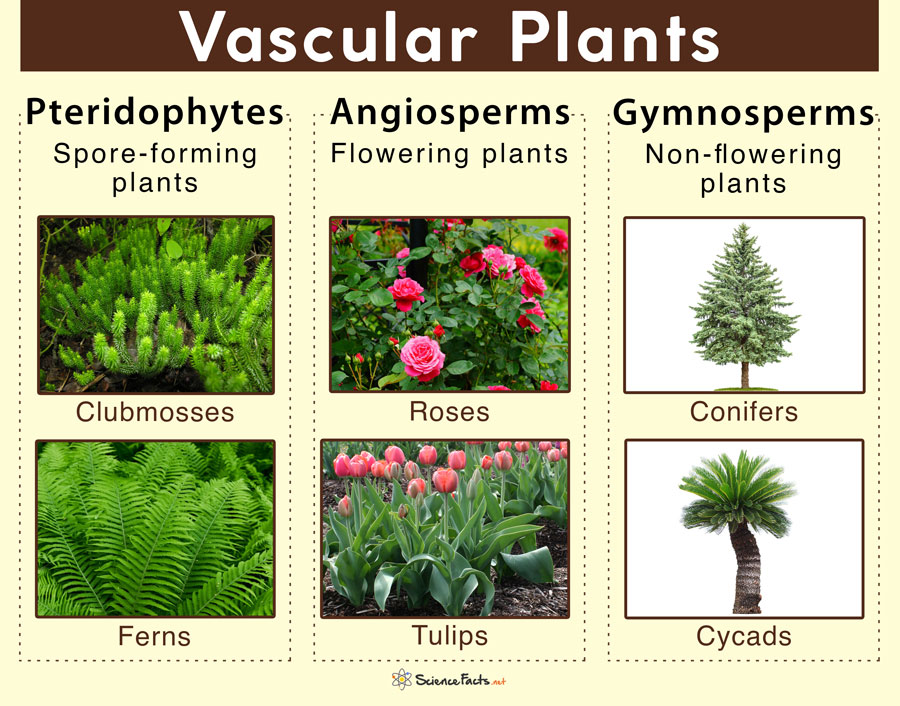
Vascular Plants Definition Characteristics Examples Diagram

Seedless Nonvascular Plants Chemistry Libretexts
Non Vascular Seedless Plants Introduction To Plants
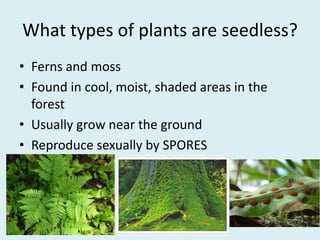
Plant Reproduction Seedless Plants Ppt
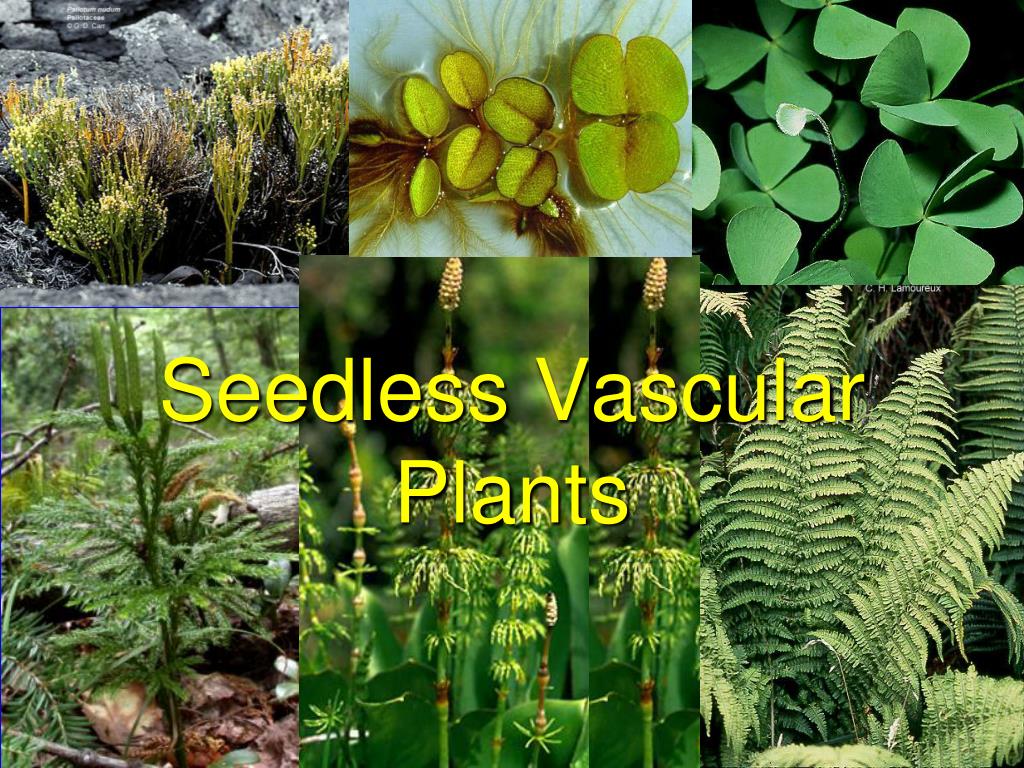
Ppt Seedless Vascular Plants Powerpoint Presentation Free Download Id 4320604

Reading Seedless Plants Biology Ii Laboratory Manual
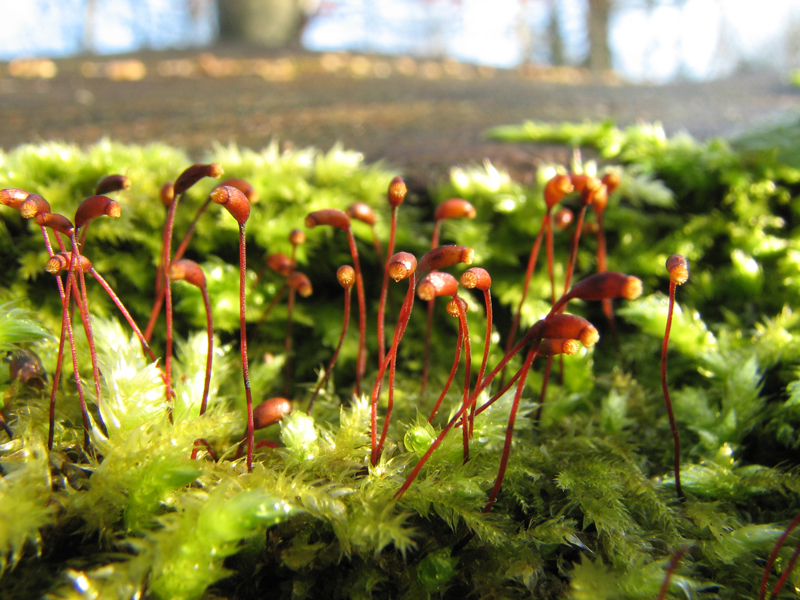
14 2 Seedless Plants Biology Libretexts

Seedless Vascular Plants Nonvascular Plants Nature Journaling Delightful Learning